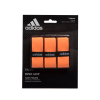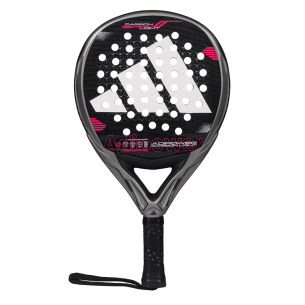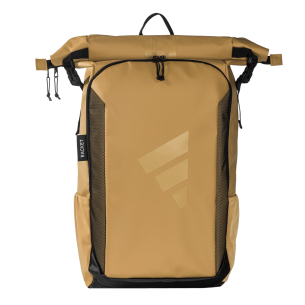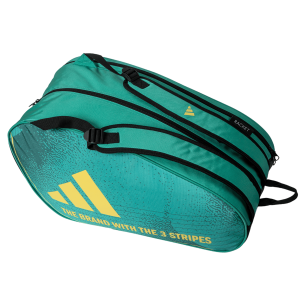
How to place the overgrip on a padel racket
The overgrip is a complement as simple as it is useful in your padel racket. For those of you who have never heard of it, it is that adhesive tape that is placed on the handle and serves to improve grip. It goes over the grip that all the rackets have on the handle, as its name indicates.
To look more in detail about everything there is to know about the overgrip, we have the knowledge of two experts: the legend of wheelchair padel, Óscar Agea, and adidas instructor Alfonso García Gamo.
Let's start by finding out how the overgrip helps us. Its main function is to provide "comfort and security in the grip," says García Gamo. But it also "allows the thickness of the grip to be increased", an option that serves to "promote grip in people with large hands and prevent elbow injuries, increase the weight of the racket in the lower part to have more control...", he adds . The options that it offers us are many and each player applies them according to their needs.
The keys to place the overgrip

“Tastes about overgrips are very personal”, says García Gamo. For this reason there is no written rule on how to place them, but there is a kind of consensus on the most common practices.
The first step is to know which side to start placing the tape on. Our instructor Alfonso García Gamo gives us the key: "at the narrowest point, there is a sticker that, when removed, allows us to stick it on top of the grip, and in this way, make it easier for us to start putting it on". In the same way, newcomers to padel may wonder: and what part of the grip do I start with? The normal thing is to start from the bottom and go placing it in an ascending way.
Once the end is glued, the technique is to rotate the racket and adhere the overgrip around the handle until the entire grip is covered. The trick, Óscar Agea tells us, is to glue it “without wrinkles or folds, ensuring it firm and fixed so as to achieve a better sensation”. García Gamo adds that "another of the keys is to try to always leave the same distance in each turn". By doing so, we ensure the entire handle is of the same thickness.
Which overgrip do I choose and how often do I change it?
“There are different types of overgrips: some that shine more, others that have a matte finish, there are smooth ones, perforated ones and in all colours”, García Gamo tells us. The fundamental aspect, says Agea, "is that it has a good grip and is resistant." From here, it goes on taste and each individual is different. "I have observed that the overgrips that have a matte finish are better when it comes to holding the racket, especially when your hand sweats a lot," our adidas monitor claims.
Regarding colour, García Gamo adds that he prefers white, but not for an aesthetic reason. “As it does not have any kind of dye, it makes the hold firmer,” he reveals. And he specifies that "you just have to look at the professional players, the vast majority use white overgrip".
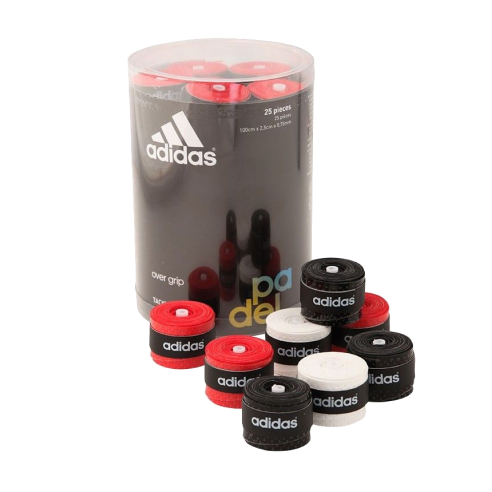
We have already seen that the whole world of overgrip is very personal. Sticking with that theme, we come to discuss how often to change it. And once again, it depends on each player and how they feel. Each one is the judge of when the overgrip of their racquet has lost its effectiveness and has stopped fulfilling its function and needs replacing.
"You have to change it when it is no longer doing its grip function", explains the world champion of wheelchair padel, Óscar Agea. Sweat is one of our worst enemies in that regard. Alfonso García Gamo gives us a tip to extend the useful life of the overgrip. “To keep it longer, what I do is dry it with a towel at each break and, above all, when I finish using the racket. In addition, he left the zipper of the racket bag a little open so that moisture does not accumulate. ”
The peculiarities of the overgrip in wheelchair padel
In wheelchair padel, Óscar Agea tells us, there are a series of issues to take into account when using the overgrip. The double use of the playing hand, to grasp the racket and to turn the chair, has its impact. For starters, Agea warns that he can only use an overgrip. Due to the size of his hand, he would need more than one, but “to have a better grip on the rim of the wheelchair and be able to have more speed”, he cannot.
The overgrip generally lasts much less in wheelchair padel. "In my case, it lasts two games," explains Agea. The reason is "the friction between the handle and the saddle rim". What is clear is that our adidas player cannot live without an overgrip on the racket. Now you also know why it is a necessity and how you should place it to have a good performance on the track.


